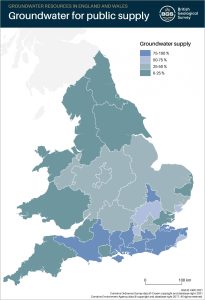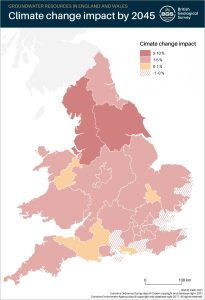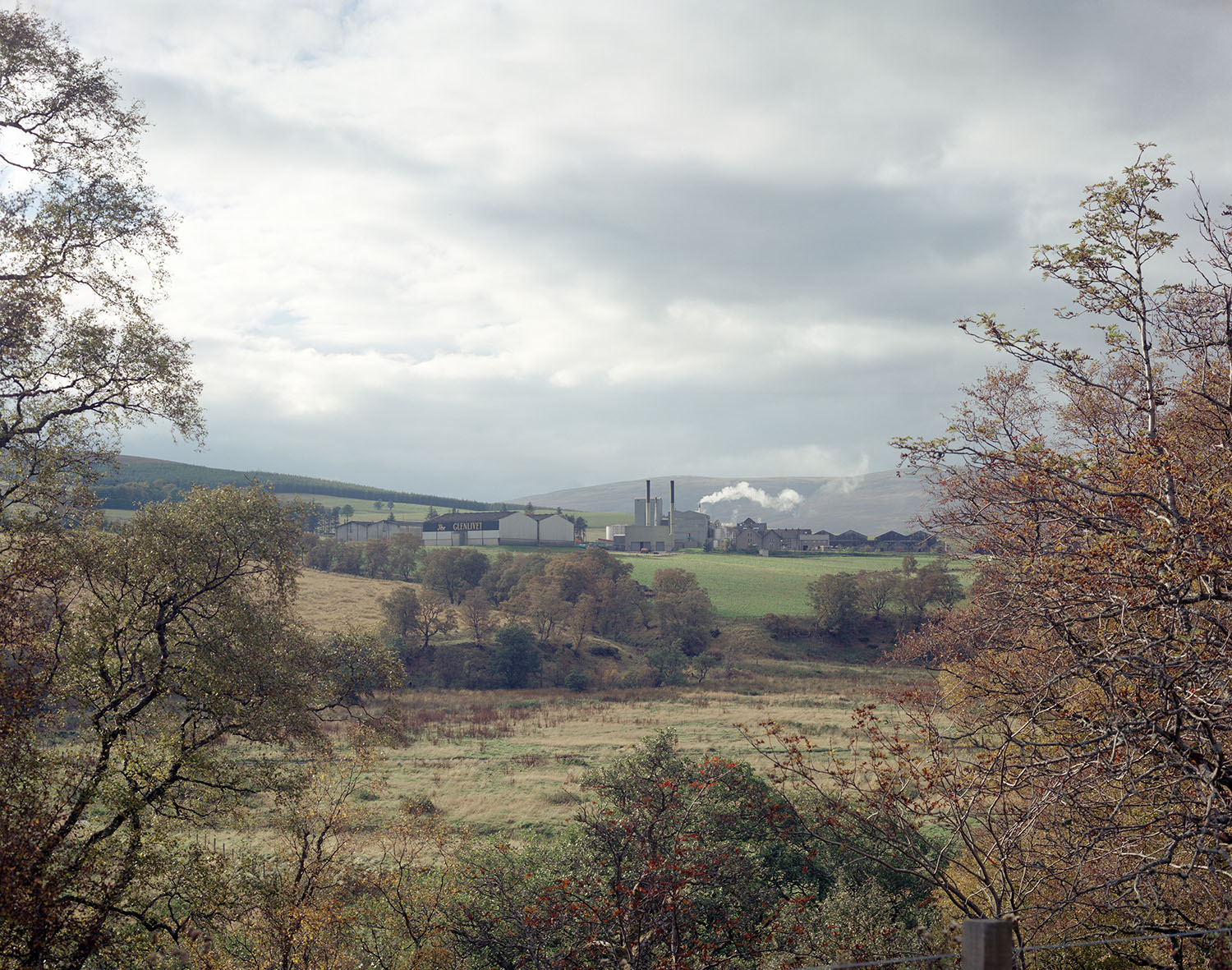Groundwater provides approximately a third of public water supply in England, and makes an important contribution in Wales and Scotland.

Figure 1 Water company areas in England and Wales. BGS © UKRI.
Current groundwater use
The volumes of groundwater used daily for public supply in England and Wales are shown in Figure 2. Some of the water supply regions are large, such as the area supplied by Anglian Water. The data covers the whole region and thus aggregate areas that are more dominated by groundwater supply (in the case of Anglian Water, this is mainly from the Chalk aquifer) with those that are more dominated by surface water (for example, Rutland Water and Grafham Water reservoirs or the River Trent).

Figure 2 Groundwater for public supply in England and Wales. BGS © UKRI.
The percentage of total public water supply (‘deployable output’) that is from groundwater is shown in Figure 3. This varies from 5 per cent (Dŵr Cymru Welsh Water) to 100 per cent (Cambridge Water).

Figure 3 Groundwater deployable output in Ml/day. BGS © UKRI.
The regional variations are largely controlled by geology and availability of groundwater and surface water. The highly productive Chalk and Permo–Triassic sandstones are the major sources of groundwater for public supply. Water companies in south-east England, where groundwater contributes over 75 per cent of total public water supply, are heavily reliant on the Chalk.
In Scotland, groundwater provides approximately 5 per cent of public water supply.
Groundwater is not currently used in mainland Northern Ireland for public water supply.
Regional groundwater studies
We prepared a series of hydrogeological reviews of regional aquifers, including the Chalk aquifers of:
There is also a report on the Dumfries Basin aquifer.
The Clyde Urban Super Project includes research into groundwater in the Clyde valley.
Future changes in public water supply
Water companies are planning to reduce abstraction from some public supply water sources (surface water and groundwater) where it affects the environment. These reductions, known as ‘sustainability reductions’, are intended to alleviate low river flows or water levels in wetland areas, usually in order to protect habitats.
Figure 4 shows planned sustainability reductions (both groundwater and surface water) as a percentage of total deployable output in 2019. Three companies planned to reduce existing abstractions by between 5 and 10 per cent (Severn Trent Water, South East Water and Cambridge Water).

Figure 4 Sustainability reductions by 2045 in England and Wales. BGS © UKRI.
As part of the water resources management planning process, water companies also estimate the effect that climate change might have on the availability of water in their supply areas. Figure 5 shows projections of the impact of climate change on total public water supply (groundwater and surface water) in 2045.

Figure 5 Climate change impact by 2045 in England and Wales. BGS © UKRI.
Whilst two companies (Essex and Suffolk Water; Southern Water) expect increases in deployable output, the remaining 17 companies foresee reductions due to climate change. These are generally less than 5 per cent of total deployable output in 2019, but between 5 and 10 per cent for two water companies in northern England (United Utilities; Yorkshire Water). Figure 6 shows the combined impact of sustainability reductions and climate change on public water supply in 2045.

Figure 6 Combined sustainability reductions and climate change impact by 2045 in England and Wales. BGS © UKRI.
- You can download all these groundwater resources of the UK maps
Recent developments in water resources planning in England and Wales
The analysis presented here is based on the latest water resources management plans, published in 2019. Water resources planning in England and Wales is currently in a period of significant change. Following work by Water UK and the National Infrastructure Commission (now the National Infrastructure and Service Transformation Authority), the Environment Agency published their National Framework for Water Resources in 2020. This marks a move from company level planning to planning at the regional scale.
The National Framework will facilitate a more joined-up approach, with water supply solutions that consider the needs of public water supply, other abstractors and the environment.
Scotland’s aquifers and groundwater bodies
We published a report on Scotland’s aquifers and groundwater bodies, which is written in the form of a manual for those with some technical groundwater and hydrogeological knowledge, but also includes summaries for non-specialists. The report, published in 2015, was written jointly by BGS and the Scottish Environment Protection Agency (SEPA).
Groundwater occurs almost everywhere in Scotland. It is a key water source for drinking, agriculture, industry — including the bottled water and whisky sectors — and recreation, including golf course irrigation. Groundwater therefore plays an important role in Scotland’s economy.

Smith’s Glenlivet Distillery, Glenlivet, Banffshire. The distillery produces the oldest licensed whisky in Scotland. An important use for groundwater. BGS © UKRI.
Groundwater is also vital to the health of Scotland’s environment, supporting surface-water ecosystems, helping to dilute and assimilate contaminants, and mitigating flooding.
The report provides an up-to-date overview of Scotland’s aquifers, their hydrogeology and their baseline groundwater chemistry. It also gives an introduction to groundwater and groundwater management in Scotland, and describes the process of delineating groundwater bodies, which are the basis of groundwater management in Scotland under the Water Framework Directive.
Karst aquifers in England
BGS work on karst aquifers focused on the Chalk and Jurassic and Permian limestones of England, soluble carbonate aquifers in which caves are uncommon and karst was generally not well recognised. These aquifers provide vital water supplies and sustain rivers and wetlands.

